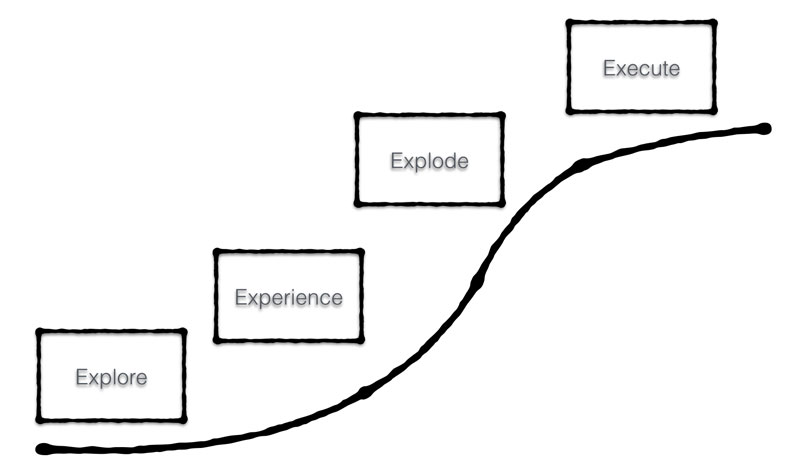Lean startup and Scrum: building an Explorer Team
The lean startup movement taught us that the term “startup” defines a phase an organisation goes through in which it searches for a scalable business model. That, at least, is the definition of a “startup” from Steve Blank, one of the leading gurus in the movement. Another guru, the author of the Lean Startup-book, Eric Ries defines a startup as:
[…] a human institution designed to deliver a new product or service under conditions of extreme uncertainty.
Both of these definitions highlight the fact that a startup is a phase of uncertainty. You don’t know if you have the right product on the right market. You don’t even know if you’re solving the right problem. That’s what uncertainty means and the goal of any startup is to get out of this state of uncertainty as soon and cheaply as possible.
In a scrum team, it is the role of the Product Owner (PO) to be the voice of the customer for the team. One description of the role is:
Part of the product owner responsibilities is to have a vision of what he or she wishes to build, and convey that vision to the scrum team. […] the agile PO should understand the market, the customer and the business in order to make sound decisions.
This relies on the PO knowing that the product will be fit for the market. That is, if we build a product according to the vision of the PO, there will be market demand for the product. This puts a huge responsibility load on the PO, especially if the product is an innovative new one. She has to be so in tune with the market that she knows, intuitively, what will work and what will not work.
It seems that the PO role works best when the market and product is known, in other words not for a startup. But, Scrum in itself does not say anything about what the team builds. With the right tools, the PO and the Scrum team can discover what product to build. And that’s where the Lean Startup processes come in. The trick is to navigate from an Explorer phase to an Execution phase while still using the same Scrum process and team. Sometimes you’re even doing exploring and executing simultaneously (such as when you’re building a major new version of a product).
[table id=1 /]
During the exploration phase, the team works with assumptions and experiments. Almost like a scientist. The startup phase can be further divided into multiple steps or states. A good scrum master acts like a “Lead Explorer” and knows what experiments to run and what to measure depending on the current state of the startup project. Together with the product owner, she defines the success criteria for the experiments. The product owner needs to be heavily involved in the explore phase, not the least in making the crucial decision to pivot or persevere.
A typical startup project has the following phases:
Explore (empathy) is a about finding the problem/solution fit and suitable tools include problem interviews, solution interviews, an experiment board (or variation thereof) and a business model canvas (or variation thereof). You leave the explore phase when you have sufficient signs that there is a problem to be solved and your solution seems to solve it.
Experience (stickiness) is about defining the product and the user experience and to find the product/market fit. You typically focus on the retention rate of your users. You leave this phase when you have sufficient signs that your product is right for the market.
Explode (growth) is about rapid growth and the goal of this phase is to find the growth drivers. You typically focus on onboarding, driving conversions and getting traffic. This is also the phase where the scrum master / Lead Explorer changes focus to shipping rather than validating assumptions.
Execute (scale) is the phase where the startup leaves the exploration phase and turns in to an”ordinary” company where the product and the market are known factors. You go from exploring to optimising. This is the normal phase for most organisations and can last for years.
Hopefully this short essay makes it clear that the scrum team needs to have a different focus in the startup phase: validated learning rather than shippable increments to a product. The scrum master in this phase takes the role of a Lead Explorer. Do you agree or disagree? Let us know on Twitter or Facebook.
(Thanks to Johan Nilsson and Peter Berggren for proof reading and feedback. Title photo by Enrique Fernández.)
